- Clone
- QA17A29 (See other available formats)
- Regulatory Status
- RUO
- Other Names
- EMR1, Ly71
- Isotype
- Mouse IgG1, κ
- Ave. Rating
- Submit a Review
- Product Citations
- 6 publications
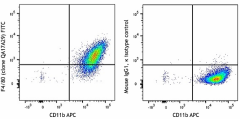
| Cat # | Size | Price | Save |
|---|---|---|---|
| 157309 | 25 µg | ¥11,880 | |
| 157310 | 100 µg | ¥27,280 |
F4/80 is a 160 kD glycoprotein. It is characterized as a member of the epidermal growth factor (EGF)-transmembrane 7 (TM7) family. F4/80, also known as EMR1 or Ly71, has been widely used as a murine macrophage marker, which is expressed on the majority of tissue macrophages including peritoneal macrophages, macrophages in lung, gut, thymus and red pulp of spleen (but not on the macrophages located in T cell areas of the spleen, lymph node and Peyer's patch), Kuffer cells, Langerhans cells, and bone marrow stromal cells. F4/80 has also been shown on a subset of dendritic cells. The biological ligand of F4/80 has not been identified, but it has been reported that F4/80 is required for induction of CD8+ T cells-mediated peripheral tolerance.
Product DetailsProduct Details
- Verified Reactivity
- Mouse
- Antibody Type
- Recombinant
- Host Species
- Mouse
- Immunogen
- Murine macrophages
- Formulation
- Phosphate-buffered solution, pH 7.2, containing 0.09% sodium azide
- Preparation
- The antibody was purified by affinity chromatography and conjugated with FITC under optimal conditions.
- Concentration
- 0.5 mg/mL
- Storage & Handling
- The antibody solution should be stored undiluted between 2°C and 8°C, and protected from prolonged exposure to light. Do not freeze.
- Application
-
FC - Quality tested
- Recommended Usage
-
Each lot of this antibody is quality control tested by immunofluorescent staining with flow cytometric analysis. For flow cytometric staining, the suggested use of this reagent is ≤ 1.0 µg per million cells in 100 µL volume. It is recommended that the reagent be titrated for optimal performance for each application.
- Excitation Laser
-
Blue Laser (488 nm)
- Product Citations
-
- RRID
-
AB_2876535 (BioLegend Cat. No. 157309)
AB_2876535 (BioLegend Cat. No. 157310)
Antigen Details
- Structure
- A 160 kD glycoprotein and a member of the epidermal growth factor (EGF)-transmembrane 7 (TM7) family
- Distribution
-
Expressed on the majority of tissue macrophages
- Function
- Required for induction of CD8+ T cells-mediated peripheral tolerance
- Cell Type
- Macrophages, Monocytes
- Biology Area
- Immunology, Innate Immunity
- Antigen References
-
- Schaller E, et al. 2002. Mol. Cell. Biol. 22:8035.
- Stevceva L, et al. 2001. BMC Clin Pathol. 1:3.
- Kobayashi M, et al.2008. J. Leukoc. Biol. 83:1354.
- Poeckel D, et al. 2009. J. Biol Chem. 284:21077.
- Glass AM, et al. 2013. J. Immunol. 190:4830.
- Koehm S, et al. 2007. J. Allergy Clin. Immunol. 120:570.
- Rankin AL, et al. 2010. J. Immunol. 184:1526.
- Sasi SP, et al. 2014. J Biol Chem. 289:14178.
- Thakus VS, et al. 2014. Toxicol Lett. 230:322.
- Ohnishi A, et al. 2015. PLoS One. 10:117616.
- Gene ID
- 13733 View all products for this Gene ID
- UniProt
- View information about F4/80 on UniProt.org
Related Pages & Pathways
Pages
Related FAQs
Other Formats
View All F4/80 Reagents Request Custom Conjugation| Description | Clone | Applications |
|---|---|---|
| Purified anti-mouse F4/80 Recombinant Antibody | QA17A29 | FC |
| PE anti-mouse F4/80 Recombinant Antibody | QA17A29 | FC |
| APC anti-mouse F4/80 Recombinant Antibody | QA17A29 | FC |
| PE/Cyanine7 anti-mouse F4/80 Recombinant Antibody | QA17A29 | FC |
| FITC anti-mouse F4/80 Recombinant Antibody | QA17A29 | FC |
| Spark YG™ 593 anti-mouse F4/80 Recombinant Antibody | QA17A29 | FC |
| APC/Cyanine7 anti-mouse F4/80 Recombinant Antibody | QA17A29 | FC |
| PerCP/Cyanine5.5 anti-mouse F4/80 Recombinant Antibody | QA17A29 | FC |
| Alexa Fluor® 647 anti-mouse F4/80 Recombinant Antibody | QA17A29 | FC |
| PE/Fire™ 640 anti-mouse F4/80 Recombinant Antibody | QA17A29 | FC |
| Spark Red™ 718 anti-mouse F4/80 Recombinant (Flexi-Fluor™) Antibody | QA17A29 | FC |
| PE/Fire™ 810 anti-mouse F4/80 Recombinant Antibody | QA17A29 | FC |
| APC/Fire™ 810 anti-mouse F4/80 Recombinant Antibody | QA17A29 | FC |
Customers Also Purchased
Compare Data Across All Formats
This data display is provided for general comparisons between formats.
Your actual data may vary due to variations in samples, target cells, instruments and their settings, staining conditions, and other factors.
If you need assistance with selecting the best format contact our expert technical support team.
-
Purified anti-mouse F4/80 Recombinant Antibody

Thioglycolate-elicited Balb/c mouse peritoneal macrophages w... -
PE anti-mouse F4/80 Recombinant Antibody

Thioglycollate-elicited Balb/c mouse peritoneal macrophages ... -
APC anti-mouse F4/80 Recombinant Antibody

Thioglycollate-elicited Balb/c mouse peritoneal macrophages ... -
PE/Cyanine7 anti-mouse F4/80 Recombinant Antibody

Thioglycollate-elicited Balb/c mouse peritoneal macrophages ... -
FITC anti-mouse F4/80 Recombinant Antibody

Thioglycollate-elicited Balb/c mouse peritoneal macrophages ... -
Spark YG™ 593 anti-mouse F4/80 Recombinant Antibody

Thioglycolate-elicited Balb/c mouse peritoneal macrophages w... -
APC/Cyanine7 anti-mouse F4/80 Recombinant Antibody
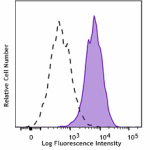
BALB/c mouse peritoneal macrophages were stained with anti-m... -
PerCP/Cyanine5.5 anti-mouse F4/80 Recombinant Antibody

BALB/c mouse peritoneal macrophages were stained with anti-m... -
Alexa Fluor® 647 anti-mouse F4/80 Recombinant Antibody
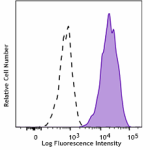
BALB/c mouse peritoneal macrophages were stained with anti-m... -
PE/Fire™ 640 anti-mouse F4/80 Recombinant Antibody

Thioglycollate-elicited Balb/c mouse peritoneal macrophages ... -
Spark Red™ 718 anti-mouse F4/80 Recombinant (Flexi-Fluor™) Antibody
-
PE/Fire™ 810 anti-mouse F4/80 Recombinant Antibody

Thioglycollate-elicited BALB/c mouse peritoneal macrophages ... -
APC/Fire™ 810 anti-mouse F4/80 Recombinant Antibody

Thioglycollate-elicited BALB/c mouse peritoneal macrophages ...











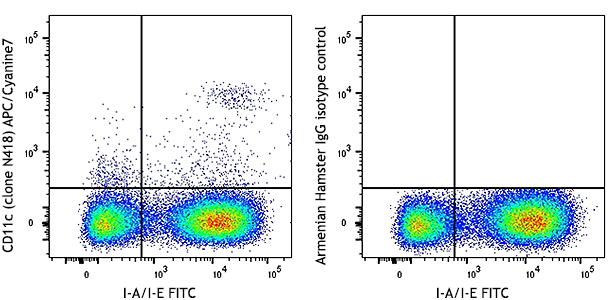
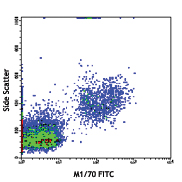
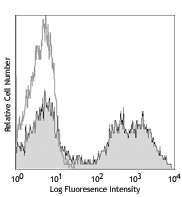







Follow Us